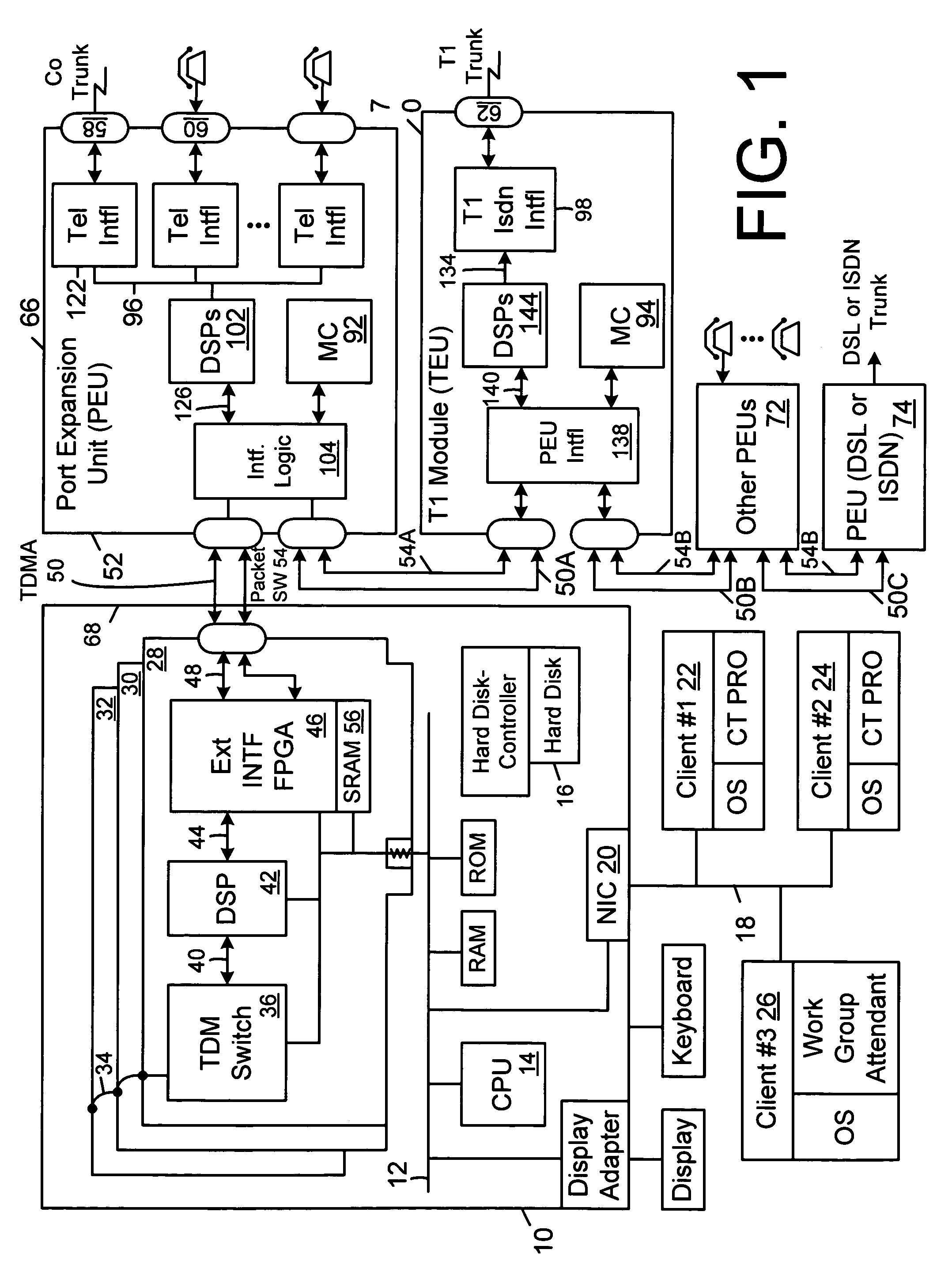PBX with configurable analog CO line and T1 signalling protocols using packet bus and software switched WAV channels
a technology of pbx and co-line, applied in the field of business telephone systems with pbx capability, can solve the problems of inability to expand the capability of adding new ports above and beyond, bottlenecks and latency, and not being particularly well adapted to bursting large amounts of data, so as to avoid any bottleneck
- Summary
- Abstract
- Description
- Claims
- Application Information
AI Technical Summary
Benefits of technology
Problems solved by technology
Method used
Image
Examples
Embodiment Construction
Distributed Multicard DSP Architecture with TDMA and Packet Switched Buses Coupling PEU Cards to Switch Cards
[0035]Referring to FIG. 1, there is shown a block diagram of an easily expandible, highly capable PBX system built around a conventional, unmodified personal computer 10 which can interface not only to analog POTS lines but to digital services such as T1, ISDN or DSL as well. The personal computer 10 can be any type personal computer such as a Windows based Pentium / Celeron class machine or a Power Macintosh class machine. Slower machines with less capable operating systems and less spacious hard drives could also be used with a resulting loss in system speed. In the preferred embodiment, the conventional personal computer is a Pentium / Celeron class microprocessor 14 running the Windows NT operating system and communicating with a PCI system bus 12. Not all the components of the personal computer are shown, but some of the more important components are shown.
[0036]A PBX contro...
PUM
 Login to View More
Login to View More Abstract
Description
Claims
Application Information
 Login to View More
Login to View More - R&D
- Intellectual Property
- Life Sciences
- Materials
- Tech Scout
- Unparalleled Data Quality
- Higher Quality Content
- 60% Fewer Hallucinations
Browse by: Latest US Patents, China's latest patents, Technical Efficacy Thesaurus, Application Domain, Technology Topic, Popular Technical Reports.
© 2025 PatSnap. All rights reserved.Legal|Privacy policy|Modern Slavery Act Transparency Statement|Sitemap|About US| Contact US: help@patsnap.com



